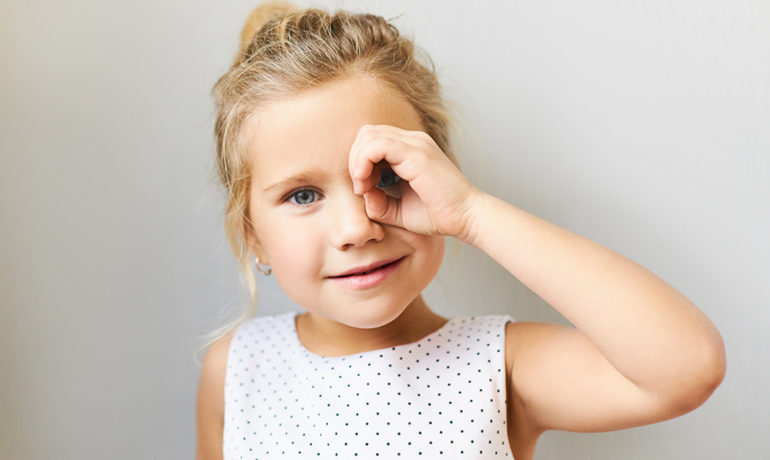Learn more about vision therapy and the exercises you can do at home to prevent a number of eye issues that may be negatively impacting your life.
What Is Vision Therapy?
Just as physical therapy strengthens your body after an injury or illness, vision therapy can do the same for your eyes.
Vision therapy is a progressive program of vision exercises individualized for each patient. Its goal is to help patients improve or develop visual skills and abilities to combat eye teaming issues and more vision conditions.
Vision therapy combines a focus on visual acuity, which measures the ability of the eye to distinguish details and shapes from a distance, with binocular function, analyzing how well the brain activities that control vision work in each patient.
Vision therapy can help with:
- Convergence insufficiency (CI)
- Lazy eye
- Eye teaming issues like strabismus
- Amblyopia
- Dyslexia
- Nystagmus
- Visual field defects
- Motion Sickness
- Dizziness
- Digital eye strain
Putting together a vision therapy program for a patient involves performing standardized visual tests and considering the person’s signs and symptoms. What will be appropriate for someone with strabismus, for example, may not be the right treatment for someone with severe motion sickness.
Integral parts of vision therapy include specialized instruments and computer programs as well as the use of lenses, prisms, occluders, and filters. For the best results, patients will have both in-office vision therapy and home therapy. Home therapy allows the person to practice newly learned skills until they become automatic.
Home Therapy Exercises
After assessing your vision concerns, your doctor may recommend a few home exercises to perform each day. They can help reduce strain, improve eye coordination, enhance convergence, and more.
Changing Focus
For people struggling with focusing and switching between distant and near objects, a good exercise is to focus on a finger and slowly move it away from your face. Ensure that you focus on your finger and nothing else.
You then want to change your focus and stare at a distance for five seconds before returning your focus to the finger. Bring the finger toward you again. Repeat the exercise three times.
A similar exercise recommends that you stare at your finger for 20 seconds, change your focus, and stare at something at a distance for 20 seconds. Repeat this exercise five times.
Figure Eights
To relieve eye strain and strengthen your eye muscles, focus on a spot on the floor a few feet in front of you. On that spot, use your eyes to draw a figure eight. Continue drawing the figure eight for 30 seconds and then change directions.
An alternative exercise is every 20 minutes, focus on an object that’s 20 feet away for 20 seconds.
Another option for eye strain is to shut your eyes and then, using gradual movements, move your eyes up and then down. Repeat this three times before moving your eyes to the right and left. Repeat the whole thing three times.
Pencil Pushups
To enhance convergence, hold a pencil or another similar object between the eyes at arm’s length. Start moving it forward, to your nose, while trying to only see one pencil. Move it slowly toward your nose until it doubles and start again. Repeat at least ten times.
Train Your Eyes with Vision Therapy
If you struggle with conditions like lazy eye, motion sickness, visual field defects, and more, vision therapy can help improve your visual performance. There are many exercises you can perform, each one treating various conditions, so you want to contact experts who can help you put together the right treatment plan for your particular needs.
At Rancho Santa Fe Optometry, we offer vision therapy for the entire North San Diego County area of California. We also offer eye exams, eye care, contact lenses, and high-quality frames and lenses for people of all ages.
Contact our team to schedule a comprehensive eye exam today.
At Rancho Santa Fe Optometry we offer comprehensive eye examinations for all ages. With a focus on children’s vision and vision therapy, our doctors test for visual acuity, visual efficiency skills and visual information processing starting in early infancy. The practice also provides diagnosis, treatment and management of diseases that affect the human eye and visual system, including dry eye syndrome, diabetic retinopathy, cataracts, macular degeneration and keratoconus.
